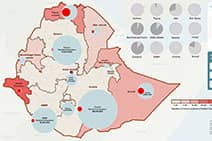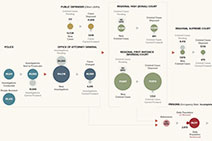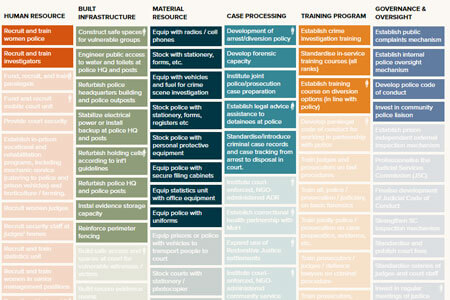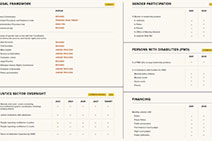Justice Snapshot Ethiopia
JUSTICE SNAPSHOT ETHIOPIA 2021
Hamle 1, 2012 – Sene 30, 2013
Rapid Justice Sector Assessment
THE JUSTICE SNAPSHOT
The Justice Snapshot Ethiopia is a rapid justice assessment of the justice system as it operated at federal and regional levels and in the Chartered Cities in the Financial Year, 2012-2013 (Ethiopian Calendar), or June 2020- July 2021 (Gregorian Calendar).
The assessment was commissioned to inform UN Agency programming in support of Government’s national policy (Ethiopia 2030: The Pathway to Prosperity) and justice institutions’ own roadmap set down in its Common Agenda – as well as to strengthen institutional capacity to capture data on its own justice system.
This is a collaborative product of regional governments, UN agencies, justice institutions and individual justice actors/practitioners, court users, implementing and development partners. It applies and adapts Justice Audit methodology and draws from lessons learned in previous Justice Snapshots (see Methodology).
A process to improve data collection and inform policy making…
This Justice Snapshot is intended as the start of a process that sees government and justice institutions investing more in their own data. The data belong to the government and institutions concerned and have been validated by Justice Snapshot Steering Committees established in each of the regions (save for Tigray).
…providing an agreed set of data all can plan around
The Situational Overview provides the context in which statutory justice services function – and the budgetary allocations available to them.
Justice Services show the resources and infrastructure with which justice service providers work at federal and regional levels and in the two Chartered Cities. They show the cases entering the system and how they are processed by the system. They show the governance mechanisms in place nationally.
The Action Matrix sets out a number of Justice Investment Options indicated by the data and institutional Annual Reports. They show the gaps in justice services and areas for improvement suggested by the data and government’s own priorities. Activities are linked to the UN Agency (or Agencies) best able to implement such activities.
The Roadmap is drawn from government policy documents (as well as data relevant to the Sustainable Development Goals – SDGs) and benchmarks are offered against which progress can be monitored.
After Acknowledgements and Methodology, the Baseline Data contain all the data collected and cleaned, and validated by the JSSC in excel format, as well as survey data. The data contained in any visualisation can be cross-checked here. The Library is a repository of all documentation relevant to the justice sector, including the laws.
A working tool rather than stand alone report
The Justice Snapshot should be used as a toolto follow a particular line of enquiry, rather than as a report to read through section by section.
Navigating tip 1: Click, click, click
Start with a question and then follow the line of questioning, or pick a strand and see where it leads. Click on the icon at the top of each page for Comment or Data Note. These will explain what the viewer is looking at as well as the sources of data relied on.
Navigating tip 2: Filter the Investment Options
The Action Matrix and the Justice Investment Options provide many options. The viewer will want to filter them so may click on > Built Infrastructure – and filter this by > Court.
Further filtering enables the viewer to view these options from the point of view of the most marginalised and vulnerable groups by adding > Human Rights And so on.
Navigating tip 3: Data do not / will not always add up
The data are provided in good faith, there will be errors and these errors are identified or indicated where they are apparent. Are they 100% accurate? No, but few countries can boast this. Are they the best available? Probably yes. It is worth recalling that this exercise marks the beginning of a process to improve data collection locally which will inform policy making nationally.



